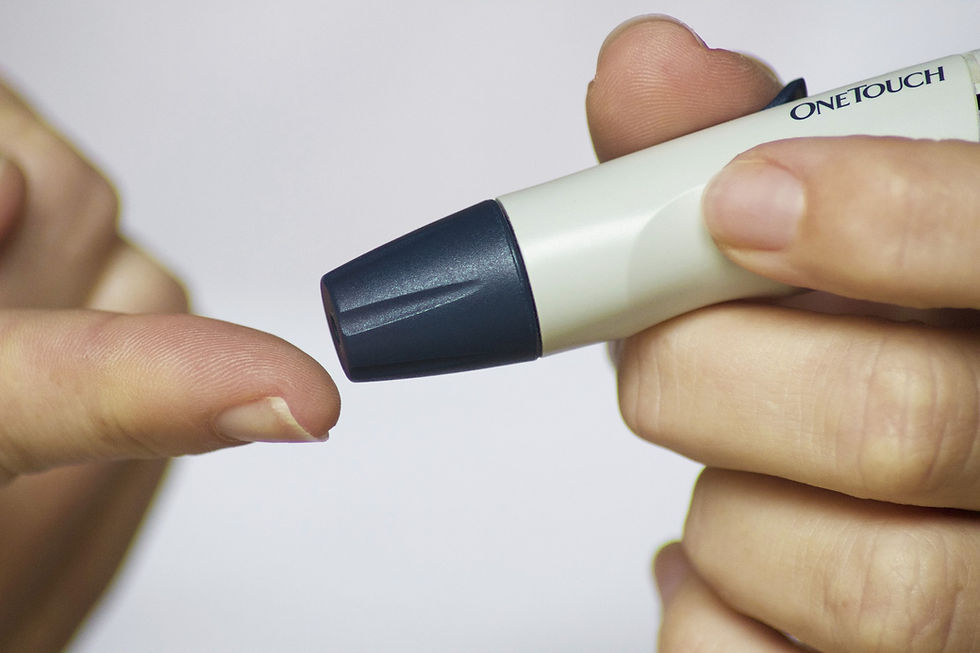Type 2 Diabetes
- Rosanne Leipzig, MD, PhD
- Oct 3, 2022
- 3 min read
Updated: Nov 7, 2022

Type 2 Diabetes: what really matters?
Diabetes occurs either because the pancreas produces little or no insulin, a hormone that regulates the absorption of sugar from the bloodstream into the cells (type 1 diabetes), or because the body becomes resistant to the effects of insulin (type 2 diabetes). The result is that sugar builds up in the bloodstream, damaging the blood vessels. Uncontrolled diabetes can affect almost every area of the body, including your eyes heart, liver, kidneys, and feet. Research also has suggested that people with uncontrolled diabetes who contracted covid-19 during the pandemic suffered more severe illness and longer hospitalization than people whose diabetes was well controlled.
A major underlying risk factor for type 2 diabetes (the most common type, and the most likely to be diagnosed in older age) is obesity. While some other diabetes risk factors (like having a family history of the disease) are uncontrollable, your weight is definitely something you can work on—and weight loss, combined with regular exercise, may be more effective than medication when it comes to keeping blood sugar at healthy levels. In one study, people with prediabetes (high blood sugar that isn’t quite high enough for a diabetes diagnosis) who reduced calories and fat in their diets, and were physically active for at least 30 minutes a day five days per week, reduced their risk of progressing to diabetes by 58 percent.
If you don’t normally exercise, start out slowly. Walk daily, increasing the distance or time by a small amount regularly until you get to 30 minutes a day, five days a week. Get a pedometer or use your smartphone and try to work up to 10,000 steps each day. You can benefit even more if you turn your daily walk into an opportunity to socialize with others—your local senior center may have a walking group, or you could start one yourself. If you’re able to, join a gym, or buy an exercise bike and put it in front of your television so you can get some exercise in while watching favorite shows. Also watch what you eat and how much you eat—see our article for more on this.
If you’re diabetic, controlling your blood pressure and lipids (fats) is as important as controlling your sugar. In general, your blood pressure reading should be no more than 130/80, LDL (“bad”) cholesterol should be less than 100 (less than 70 if you have diabetes and heart disease), and triglycerides less than 150. Discuss these numbers with your doctor and decide what your target should be. Then work to get to these goals. You already may have a home glucose monitor but you also may want to invest a home blood pressure monitor so that you can regularly check your blood pressure.
There’s a real art to controlling blood sugar, since it fluctuates with activity, the foods we eat, and with certain medications. Learning how to keep it in a normal range (not too high and not too low) will take time—but if you have diabetes, it’s one of the best things you can do for your health. The bottom line is that nobody can control your diabetes as well as you can. Consider conquering diabetes to be a personal challenge—it may not be an easy battle to win, but it is definitely worth the fight.
For more info like this, subscribe to the newsletter at www.focusonhealthyaging.com.
Comments